Overview of Automation's Growing Influence in Resource Management
Over the next five years, automation is expected to play a transformative role in resource allocation across multiple industries. Driven by technological advancements in artificial intelligence, machine learning, IoT, and robotics, organizations will increasingly depend on intelligent systems to distribute human, financial, and physical resources more accurately, efficiently, and sustainably. This evolution will bring profound benefits, as well as significant challenges, requiring strategic planning, change management, and innovative approaches to harness automation’s full potential.
Historical Context and Evolution of Automation Technologies
What are the main milestones in the history of automation?
Automation’s journey began in the 1960s with the introduction of industrial robots. In 1961, General Motors implemented Unimate in their assembly lines, marking a revolutionary step in manufacturing. This robot significantly improved productivity and cut labor costs. The 1970s saw automation enhancements in aviation, especially autopilot systems, which contributed to safer air travel by minimizing human errors.
In retail, 1986 was pivotal with the invention of self-service checkout machines, signaling the start of retail automation. The 1990s expanded automation use in retail and hospitality sectors; companies like IBM introduced POS systems, and Amazon Go storefronts employed fully automated checkout processes. Over the decades, this evolution laid a foundation for the rapid integration of automation in various industries.
How have advancements in robotics, AI, and IoT shaped industries?
Robotics evolved from simple mechanical devices to intelligent systems capable of complex tasks. AI has become central to automation, enabling systems to learn, predict, and make decisions, transforming sectors such as healthcare, with AI-managed surgeries, and finance, with intelligent fraud detection. The Internet of Things (IoT) has expanded automation’s reach by connecting devices for real-time data collection, predictive maintenance, and resource management.
Emerging technologies like machine learning, augmented reality (AR), virtual reality (VR), additive manufacturing, and cybersecurity are further pushing automation boundaries. For instance, in manufacturing, AI-powered predictive maintenance and smart factories can boost efficiency by 30-40%, while autonomous vehicles and delivery drones are expected to become common by 2025.
| Era/Technology | Major Development | Industry Impact | Additional Details |
|---|---|---|---|
| 1960s | Introduction of industrial robots | Manufacturing efficiency | First robot: Unimate in GM's assembly line |
| 1970s | Autopilot in aviation | Safer air travel | Reduced human error |
| 1980s | Self-service checkouts | Retail automation | Allowed faster customer service |
| 1990s | POS systems & automated retail | Retail and hospitality | Amazon Go stores |
| 21st century | AI, IoT, robotics | Cross-sector digital transformation | Predictive analytics, autonomous vehicles |
What are challenges and barriers to adopting automation in resource management?
Implementing automation in resource management faces multiple hurdles. High initial costs for technology and infrastructure upgrades are significant obstacles. Technical complexity and integration difficulties with legacy systems often slow down deployment.
Organizational resistance rooted in fears of job loss and cultural shifts can impede progress. Lack of skills within the workforce further complicates adoption, highlighting the need for dedicated training and continuous learning programs.
Effective planning is essential—unclear objectives, poor opportunity assessment, and concerns over return on investment (ROI) can limit success. Data management complexities, scalability issues, and system interoperability also play roles, requiring strategic incremental approaches and partnerships with experienced providers.
| Barriers | Description | Overcoming Strategies |
|---|---|---|
| High initial cost | Funds required for new tech | phased investment, ROI analysis |
| Technical complexity | Difficult system integration | skilled partnerships & testing |
| Workforce skills gap | Lack of trained personnel | employee training & upskilling |
| Organizational resistance | Fear of job losses | transparent communication |
| Data and scalability issues | Managing large data sets | modular, scalable solutions |
Understanding the evolution of automation over decades helps contextualize its rapid acceleration today. As both technology and challenges evolve, strategic planning and responsible implementation will be crucial to leveraging automation’s full potential in resource management and beyond.
Key Industries Shaping the Future of Resource Allocation Automation
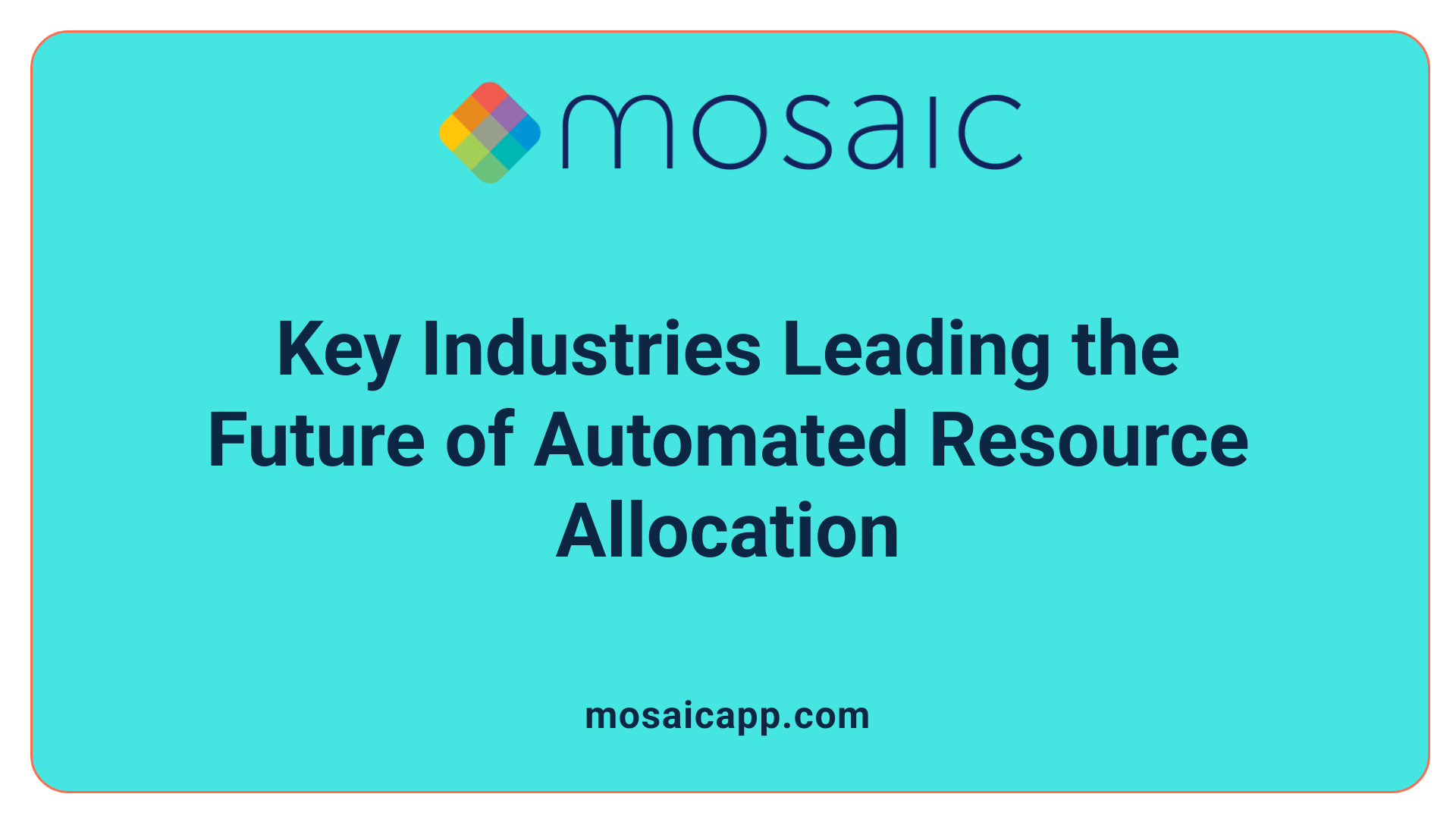
What are the benefits of automation in resource allocation across different industries?
Automation in resource allocation offers numerous advantages that impact a variety of sectors positively. It primarily boosts accuracy and efficiency by reducing human errors and ensuring optimal use of resources. For example, in manufacturing, automation leads to precise inventory management and reduced waste, while in healthcare, it ensures the right allocation of supplies and personnel.
Real-time visibility is another significant benefit, allowing organizations to monitor resource usage continuously. This proactive approach improves forecasting abilities and facilitates smarter decision-making supported by data analytics and AI insights. Moreover, automation fosters better collaboration by streamlining communication among team members, which is crucial in complex projects involving multiple departments.
Cost reduction is a key outcome, achieved by minimizing unnecessary expenditure, preventing resource underutilization, and lowering overtime and procurement costs. Overall, automating resource management enhances productivity, enables scalable growth, and improves project outcomes—delivering a strategic edge across industries.
How are automation systems like AI and ERP influencing operational efficiency and decision-making?
AI and ERP systems are transforming how organizations operate by making processes more streamlined and data-driven. These automation tools handle routine tasks such as data entry, scheduling, and reporting, freeing up valuable human resources for more strategic activities.
AI’s capabilities of deep data analysis, predictive analytics, and demand forecasting enable companies to anticipate needs and respond swiftly. In manufacturing, AI-driven ERP systems facilitate predictive maintenance, reducing downtime and increasing output by up to 30-40%. In supply chain management, they optimize inventory levels, improve delivery schedules, and predict disruptions before they occur.
Furthermore, these systems enhance decision-making accuracy through real-time insights, pattern recognition, and natural language processing. They help leaders identify cost-saving opportunities, improve customer service, and manage resources with greater precision.
By integrating AI into enterprise platforms, organizations cultivate more intelligent, adaptable environments capable of continuous improvement. This evolution results in faster, better decisions and a more agile approach to resource management—key to maintaining competitiveness in dynamic markets.
Technological Trends Shaping the Future of Automation in Resource Management
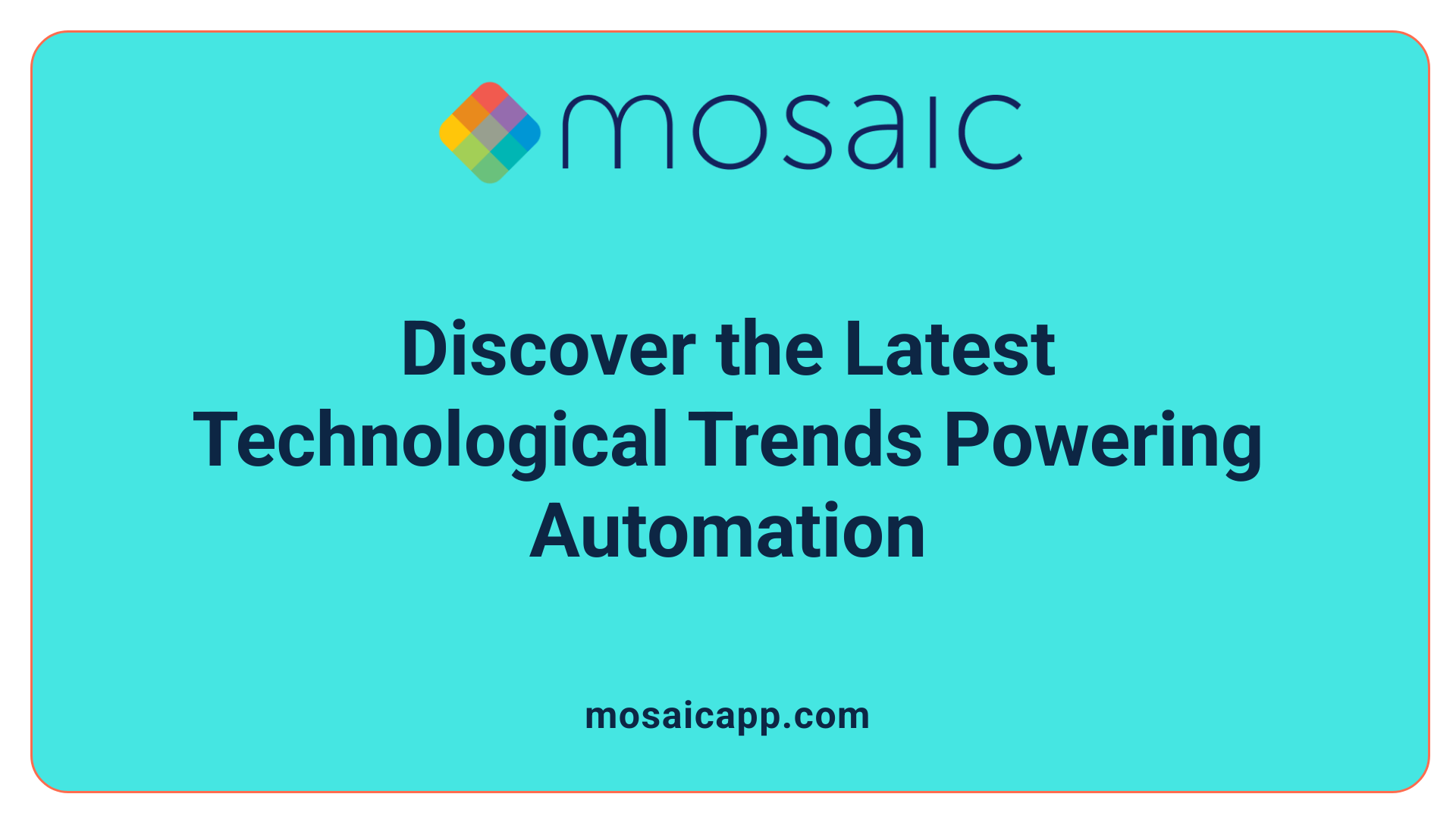
What technological trends and innovations are shaping automation in resource management?
Automation in resource management is being revolutionized by several advanced technological trends. At the forefront are innovations in artificial intelligence (AI) and machine learning (ML). These enable smarter decision-making, predictive analytics, and process optimization, allowing organizations to anticipate issues and allocate resources more effectively.
The Internet of Things (IoT) and digital twins are transforming real-time monitoring and simulation of physical assets. IoT devices gather continuous data from machinery, environments, and logistics, supporting proactive maintenance and efficient resource utilization. Digital twins create virtual replicas of physical systems, enabling testing and scenario planning without disrupting actual operations.
Emerging technologies like generative AI and natural language processing (NLP) expand automation's role, especially in processing unstructured data and content creation. These tools support automated report generation, content management, and complex data analysis.
Cloud-native platforms and ecosystem automation facilitate the seamless integration of various systems and tools. They enable scalable and flexible infrastructure that automatically adapts to changing operational needs.
Process intelligence and advanced cybersecurity measures ensure that automation solutions are reliable, secure, and compliant with regulatory standards. As organizations adopt these innovations, responsible deployment—focused on ethics and governance—becomes paramount.
Together, these technological trends are enabling resource management processes to become more proactive, predictive, and efficient, laying the groundwork for a more sustainable and agile future.
Supply Chain and Resource Planning in the Era of Hyperautomation

What are the current trends and opportunities in supply chain automation and resource planning?
The landscape of supply chain management is transforming rapidly, driven by cutting-edge technologies such as artificial intelligence (AI), machine learning (ML), the Internet of Things (IoT), blockchain, and digital twin simulations. These innovations allow organizations to create more transparent, responsive, and resilient supply networks.
One prominent trend is the use of generative AI for demand forecasting, virtual logistics planning, and route optimization. These tools analyze vast amounts of data to predict customer demand patterns accurately, reduce manual planning efforts, and optimize delivery routes, ultimately lowering costs and improving service levels.
Real-time data integration plays a crucial role; it enables predictive analytics that help anticipate disruptions and enable proactive risk management. Low-code platforms further accelerate application development, empowering supply chain teams to quickly deploy tailored solutions without extensive coding.
Sustainability is also gaining emphasis through automation; companies utilize AI for ESG reporting, monitoring carbon footprints, and optimizing routes to reduce emissions. Autonomous delivery methods, including drones and self-driving vehicles, are becoming more prevalent, promising efficiency gains in last-mile logistics.
Overall, the shift toward hyperautomation fosters end-to-end visibility and smarter decision-making. This evolution ensures supply chains are more agile, cost-effective, and aligned with sustainability goals, helping organizations meet the fast-changing demands of global markets.
Below is an overview of automation components shaping supply chain resource planning:
| Technology | Functionality | Impact |
|---|---|---|
| Demand Forecasting | Uses AI to predict customer demand based on historical data | Improves inventory accuracy, reduces stockouts |
| Route Optimization | AI-based algorithms optimize delivery routes | Saves fuel, reduces delivery times, lowers costs |
| Blockchain | Enhances traceability and security in supply chains | Increases transparency, reduces fraud |
| Autonomous Delivery | Drones and autonomous vehicles for last-mile delivery | Speeds delivery, reduces labor dependency |
These advancements are transforming resource planning, making supply chains more efficient, sustainable, and capable of responding swiftly to global challenges.
Implementing Automation: Strategies and Best Practices
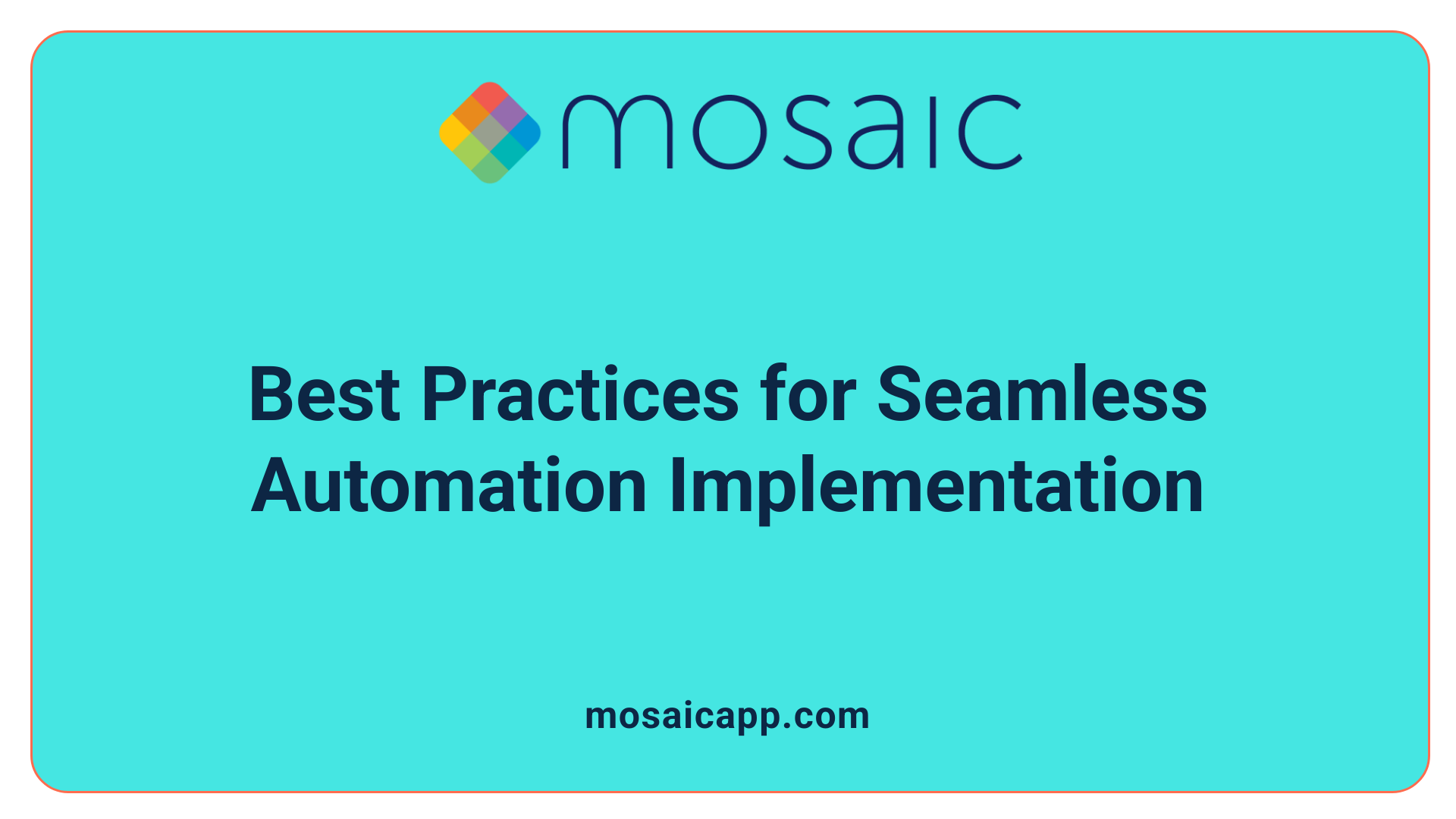
What are the best practices for implementing automation in resource allocation?
Effective automation implementation in resource management begins with thorough strategic planning. Organizations should clearly outline their goals and identify processes that can benefit most from automation. This involves assessing the current technological landscape to ensure readiness for new systems.
Stakeholder involvement is crucial. Engaging teams from different departments early on fosters acceptance and gathers diverse insights. Starting with small-scale projects allows for manageable experimentation, minimizing risk and providing tangible proof of benefits.
Utilizing specialized resource management tools can streamline scheduling, capacity planning, and real-time tracking. These tools help optimize resource use, reduce manual errors, and free up staff for higher-value tasks.
Incorporating AI and predictive analytics further refines resource planning by enabling smarter forecasting of resource needs and detecting potential shortages or overlaps before they occur. This proactive approach enhances efficiency and supports timely decision-making.
Continuous evaluation of automation outcomes, ongoing stakeholder engagement, and adaptability in the deployment plan ensure the process remains aligned with organizational changes and evolving project requirements. Combining these practices helps organizations fully realize automation's benefits in resource allocation.
Transformations in Project Management and Workflow Automation
How are automation technologies transforming project management and workflow automation?
Automation, especially driven by advances in AI and Generative AI, is reshaping how projects are planned, executed, and monitored. These technologies streamline routine tasks like scheduling, resource allocation, and progress tracking, making workflows more efficient and reducing errors caused by manual handling.
Real-time collaboration tools embedded within automation platforms facilitate seamless communication among team members, regardless of location. This allows project teams to adapt quickly to changes and make smarter decisions backed by data insights. For example, AI-powered virtual assistants can update schedules, send reminders, and provide project updates automatically.
Risk management also benefits significantly from automation by offering early detection of potential issues through predictive analytics. Intelligent systems constantly analyze project data, helping managers identify risks before they escalate into major problems.
Smart reporting features powered by AI enable automatic generation of detailed project reports, ensuring stakeholders stay informed without extra effort. Additionally, complex processes like project scoping and compliance checking are now automated, reducing manual workload and increasing accuracy.
As automation tools become more prevalent, project managers are shifting from administrative roles to strategic oversight. This shift emphasizes the need for new skills, including proficiency in AI tools and soft skills like leadership and communication.
Overall, automation makes project workflows more dynamic and responsive, boosting productivity and significantly improving success rates by enabling predictive, data-driven management.
Workforce Planning and Organizational Strategies in the Age of Automation
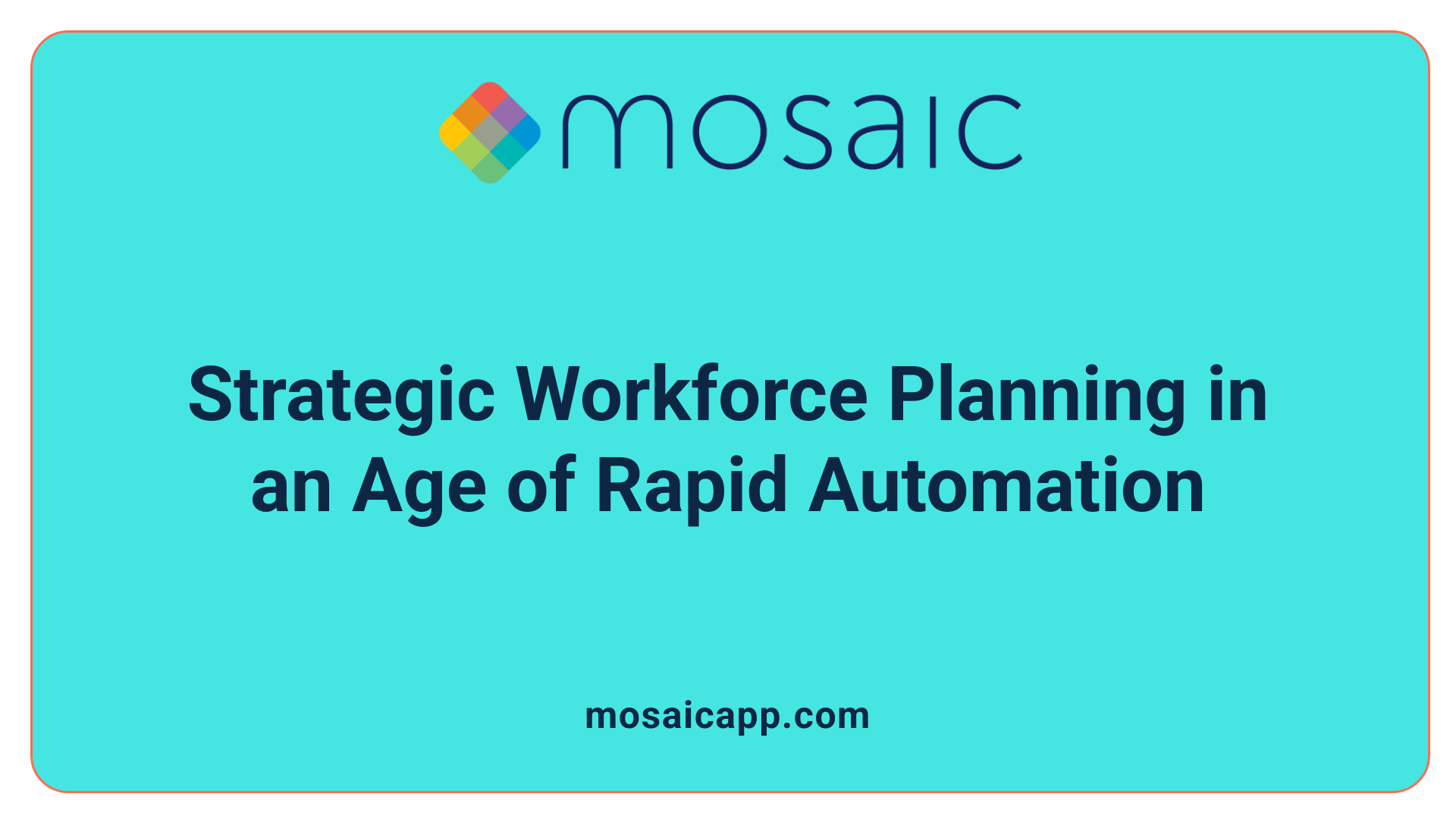
How does automation influence workforce planning, productivity, and organizational strategies?
Automation is reshaping how organizations approach workforce planning and strategy. By leveraging advanced analytics and real-time data, companies can forecast workforce needs more accurately, making their planning more responsive to changing conditions. Automation tools enable scenario modeling, helping leaders anticipate future skill requirements and plan for talent acquisition or development.
Moreover, automation allows for greater resource flexibility. Organizations can adapt quickly to market shifts or technological advances, fostering business agility. For example, deploying AI-driven systems in supply chain management or customer service means fewer manual processes and more focus on strategic growth.
Automating routine and repetitive tasks also frees up employees' time, empowering them to engage in higher-value activities such as innovation, strategic planning, and customer engagement. This shift not only boosts productivity but also enhances job satisfaction for workers involved in meaningful work.
However, these changes are not without challenges. Automation can cause job displacement, making reskilling and upskilling crucial. Organizations are increasingly investing in workforce development programs to equip employees with new skills suited to an automated workplace.
Overall, automation influences organizational strategies by supporting a culture of innovation and efficiency. It encourages a more dynamic approach to workforce management, aligning talent development with technological advancements to sustain competitive advantage.
The Ethical and Regulatory Landscape of Automation in Resource Management
What challenges and barriers exist for adopting automation in resource management?
Implementing automation in resource management is not solely a matter of technology but also involves navigating complex ethical and regulatory challenges. Data security, algorithmic bias, and the need for responsible AI practices create significant hurdles for organizations.
Data security concerns revolve around protecting sensitive information from breaches, especially as automation relies heavily on vast amounts of data. Companies must deploy strict security protocols to safeguard this information against cyber threats.
Algorithmic bias presents another challenge, where automated decision-making systems may inadvertently perpetuate existing prejudices present in training data. This can lead to unfair resource distribution or discrimination, undermining trust and fairness.
Responsible AI and governance frameworks are essential in ensuring transparent, ethical deployment. This includes implementing bias detection tools, ensuring explainability in AI decisions, and establishing oversight mechanisms.
The regulatory landscape is evolving rapidly, with standards like GDPR in Europe and HIPAA in health data privacy influencing automation strategies. Organizations must align their practices with these laws to avoid legal penalties.
Environmental, Social, and Governance (ESG) considerations further demand responsible automation. Stakeholders increasingly expect companies to embed sustainability, accountability, and ethical standards into their resource management processes.
Failing to address these governance and ethical issues can result in reputational damage, legal actions, and stakeholder mistrust. Thus, building responsible AI systems and implementing continuous oversight are crucial for long-term success.
What is the future impact of automation on resource allocation across industries?
Looking ahead, automation is set to revolutionize how industries allocate resources. It will enable real-time monitoring, predictive management, and autonomous decision-making, leading to more efficient and adaptive systems.
Smart, interconnected systems can dynamically adjust resource distribution based on current demands, reducing waste and increasing operational agility. For example, in manufacturing, AI-driven predictive maintenance can optimize equipment use and minimize downtime.
Environmental sustainability will benefit from automated resource management by enabling more precise energy use and waste reduction. This supports industry efforts to meet ESG goals while maintaining productivity.
However, ensuring ethical development remains a priority. Developing responsible AI frameworks and industry-specific regulations will promote transparency, fairness, and accountability.
Such measures will help harness automation's full potential without compromising social and environmental responsibilities. Responsible automation will foster sustainable growth, innovation, and resilience across sectors, leading to more equitable and efficient resource distribution.
In conclusion, as organizations develop smarter, more autonomous systems, balancing technological advancement with ethical standards will be vital. The future landscape of resource management will be characterized by responsible, adaptive, and equitable automation practices, shaping industries for sustainable success.
Conclusion: Embracing Automation for a Smarter, Sustainable Future
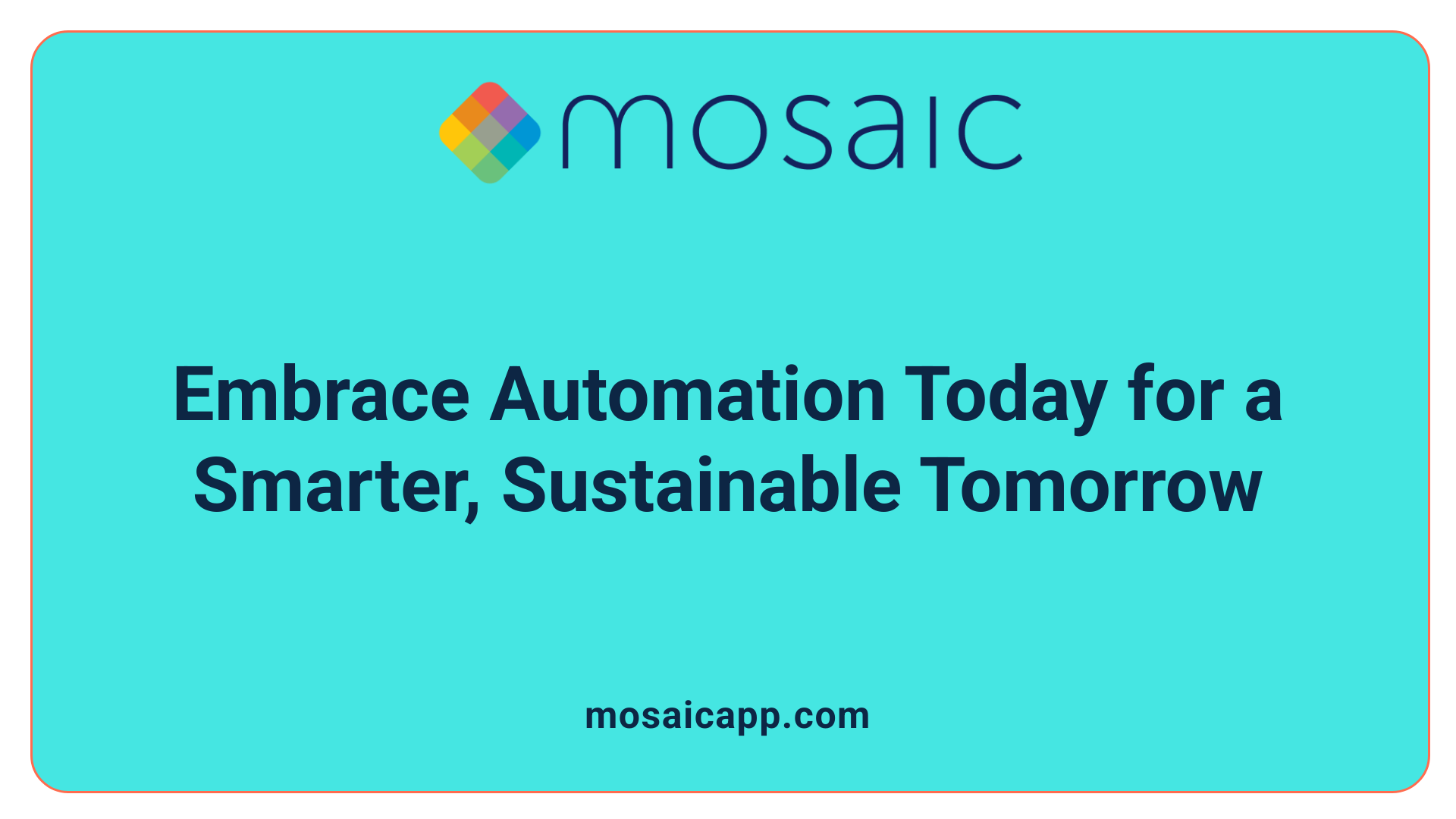 Automation continues to transform industries and reshape how organizations operate, with significant impacts expected by 2025. From manufacturing and healthcare to retail, automation enhances efficiency, reduces costs, and opens new avenues for innovation. Technologies such as AI, IoT, and hyperautomation facilitate real-time data analysis, predictive maintenance, and personalized services, helping businesses respond swiftly to changing demands.
Automation continues to transform industries and reshape how organizations operate, with significant impacts expected by 2025. From manufacturing and healthcare to retail, automation enhances efficiency, reduces costs, and opens new avenues for innovation. Technologies such as AI, IoT, and hyperautomation facilitate real-time data analysis, predictive maintenance, and personalized services, helping businesses respond swiftly to changing demands.
The future of resource distribution will be notably optimized through advanced automation systems. These systems analyze large datasets to forecast needs accurately, adjust workforce deployment dynamically, and manage inventories more efficiently. Cloud platforms and integrated management tools promote seamless collaboration across departments, reducing manual workflows and minimizing waste.
Workforce implications are substantial. While automation may displace routine roles, it also creates opportunities for new, skilled jobs in data science, AI development, and system management. Reskilling initiatives and supportive assessments, like EXIN's 'Astride,' are vital to prepare workers for these evolving roles.
Ethical considerations remain a critical aspect of automation's growth. Challenges like algorithm biases, data security, and job displacement demand responsible AI development, transparent governance, and adherence to regulations. Emphasizing human-centric AI and sustainable practices ensures automation benefits both organizations and society.
By embracing these technological advancements responsibly, organizations can achieve smarter resource management, drive sustainable growth, and foster innovation. As we look ahead, continuous adaptation, ethical oversight, and workforce development will be crucial in maximizing automation's potential for a better future.
Final Thoughts: Towards a Smarter, More Sustainable Resource Future
The next five years will be pivotal in leveraging automation to transform resource allocation across industries. As technologies like AI, IoT, and robotics advance, organizations will gain unprecedented capabilities for precision, speed, and efficiency. However, realizing these benefits requires overcoming significant challenges related to costs, integration, workforce upskilling, and ethical considerations. Strategic implementation, continuous innovation, and responsible AI practices will be vital in fostering a future where automation not only optimizes resource distribution but also supports sustainable, equitable growth. Embracing these changes will prepare organizations for a resilient, dynamic future where technology works in harmony with human ingenuity to create smarter, more sustainable industries.
References
- Ready or Not: The Role of Automation in 2025 and Beyond
- Exploring the Future of Industrial Automation in 2025
- What is the Future of Automation? 2025 Trends & Predictions
- Hyperautomation trends for 2025
- Machines Will Do More Tasks Than Humans by 2025 but ...
- 70 Business Automation Statistics Driving Growth in 2025
- AI in ERP: The Next Wave of Intelligent ERP Systems
- Automate HR While Keeping the Human Touch
- Future Trends in Automated Resource Allocation


